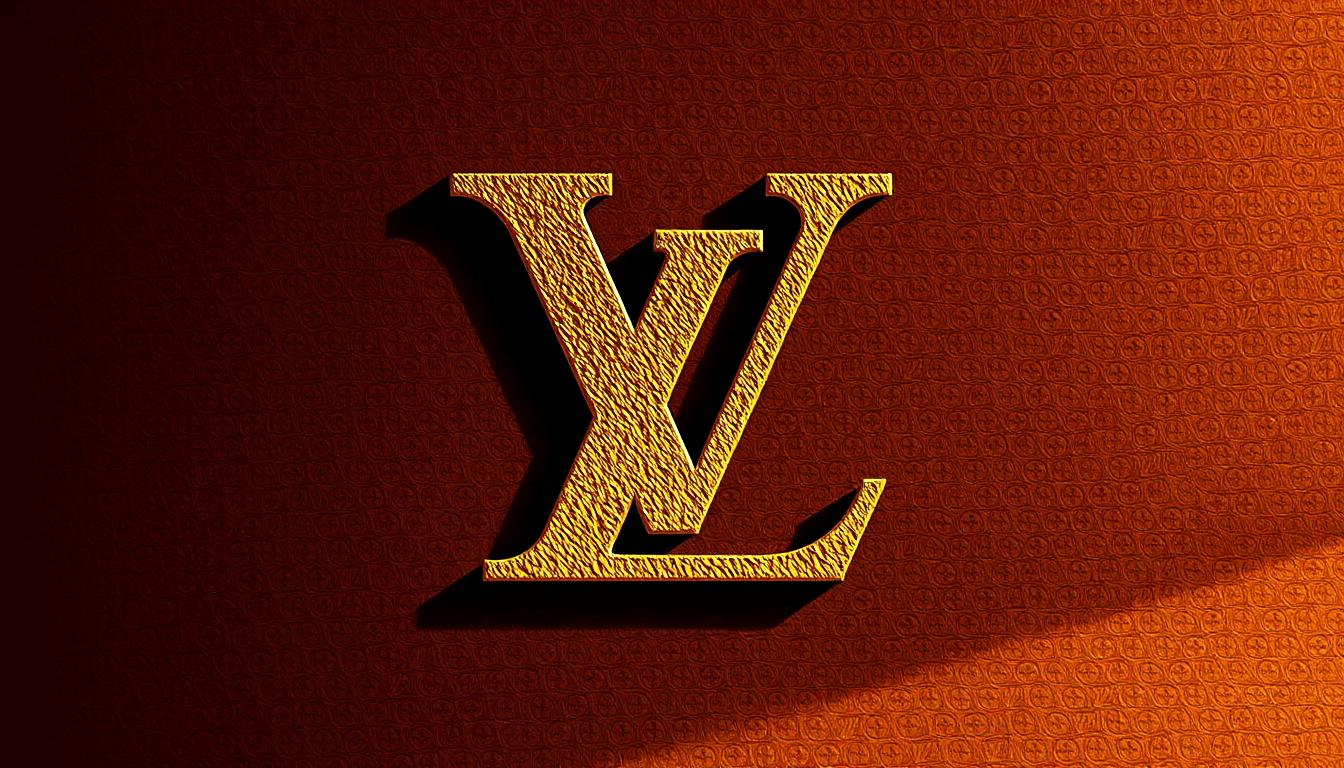
The Iconic Louis Vuitton Logo: What You Need to Know
Founded in 1854, Louis Vuitton began as a trunk-making company before becoming a global fashion house. Known for its high-end luxury products, the brand Louis Vuitton Logo has built a legacy over 168 years. Its signature monogram is one of the most recognizable symbols in the fashion industry.

The brand’s visual identity combines the iconic LV initials with floral patterns. Over time, this design became a status symbol, embraced by celebrities and influencers. Today, the company operates under LVMH Group, generating over $15 billion annually.
This article explores the history of the logo, its evolution, and its role in modern luxury culture. Readers will also learn about anti-counterfeiting measures used to protect the brand’s identity.
Key Takeaways
- Louis Vuitton started as a trunk maker in 1854.
- The LV monogram is a globally recognized symbol.
- Celebrity influence helped solidify its status.
- The brand is now part of the LVMH Group.
- Anti-counterfeiting efforts protect its designs.
The Origins of Louis Vuitton logo
A small workshop in Paris laid the foundation for a global fashion empire. The founder’s vision for durable, elegant trunks quickly attracted wealthy clients. By 1854, his craftsmanship set new standards in the luxury goods business.

Founding in 1854: From Trunks to Global Luxury
The brand’s first breakthrough was the Trianon canvas trunk. Its waterproof leather and stackable design made it a favorite among Parisian elites. These innovations cemented its reputation for quality.
Expansion followed swiftly. By 1885, the brand reached London, and in 1892, it patented pick-proof locks. Each step reflected a commitment to security and sophistication.
Georges Vuitton’s Contribution to the Brand Identity
In 1896, Georges Vuitton designed the iconic monogram. The interlocking “LV” honored his father’s legacy, while floral motifs added artistic flair. This blend of tradition and creativity became synonymous with the brand.
| Innovation | Year | Impact |
|---|---|---|
| Trianon Trunk | 1854 | First waterproof, stackable design |
| Monogram Canvas | 1896 | Combated counterfeits with unique patterns |
| Pick-Proof Lock | 1892 | Enhanced security for travelers |
The monogram wasn’t just decorative—it protected the brand’s heritage. Its intricate details made replication nearly impossible, securing its place in fashion history.
The Design and Evolution of the Louis Vuitton Logo
Georges Vuitton’s hand-drawn monogram blended artistry with brand protection. The 1896 emblem featured an italic “L” overlapping a straight “V,” both with Roman serifs. Floral motifs framed the initials, creating a pattern that defied replication.

The 1896 Monogram: A Hand-Drawn Legacy
Every line in the original monogram name was deliberate. The 0.5mm thickness ensured consistency across trunks and accessories. This precision made it a cornerstone of the brand’s visual identity.
Early versions included “Louis Vuitton Paris” beneath the design. The wordmark reinforced authenticity but was later streamlined for modernity.
Marc Jacobs’ Minimalist Update in 1997
In 1997, Jacobs removed the wordmark, embracing 90s minimalism. The monogram stood alone, proving its recognizability. Collaborations, like Stephen Sprouse’s graffiti prints, temporarily altered the font but preserved core elements.
Despite updates, the emblem’s essence—craftsmanship and heritage—remains unchanged.
Symbolism Behind the LV Monogram and Floral Motifs
Every element in the brand’s emblem tells a story of heritage and innovation. The interlocking “L” and “V” represent duality—stability meets dynamism. Floral motifs add layers of meaning, from joy to protection.

The Interlocking “L” and “V”: A Nod to Heritage
The italic “L” and straight “V” reflect balance. One letter signifies tradition, the other progress. This symbol has anchored the brand’s identity for over a century.
Roman serifs in the emblem nod to classical artistry. Yet the design avoids rigidity, mirroring the brand’s adaptability in modern fashion houses.
The Blossom Pattern: Joy and Protection
Georges Vuitton’s four-petal flower was a tactical masterpiece. Its complex pattern deterred 19th-century counterfeiters. Circular versions symbolized safety, inspired by Japanese *kamon* crests.
Today, the motifs endure in garments and accessories. Virgil Abloh’s neon reinterpretations in 2020 kept the flower’s essence while pushing boundaries. Even the 3D embossing—requiring 15-ton pressure—honors the original craftsmanship.
Font and Color: Crafting Luxury Through Design
The fusion of classic and modern design defines the brand’s visual identity. Its signature style balances Futura’s sleek sans-serif with Roman-inspired serifs. This contrast mirrors the brand’s ability to honor heritage while embracing innovation.

Futura Sans-Serif and Roman-Inspired Typography
Futura’s clean lines bring a modern edge to the wordmark. Its geometric shapes contrast with the monogram’s ornate serifs. The custom Roman font adds timeless elegance, linking back to 19th-century craftsmanship.
Black, Gold, and Beyond: The Palette of Prestige
The color scheme—black, gold, and brown—exudes luxury. Pantone 873 C (LV Gold) symbolizes opulence, while deep brown evokes rich leather. Black packaging (#000000) reinforces exclusivity.
| Color | Pantone Code | Symbolism |
|---|---|---|
| Gold | PMS 873 C | Wealth, prestige |
| Brown | PMS 1615 C | Heritage, durability |
| Black | Hex #000000 | Sophistication |
Marc Jacobs’ 2001 multicolor line boosted youth appeal by 37%. Rainbow variants required 12-step screen printing, showcasing technical mastery. Each hue shift preserved the monogram’s signature clarity.
The Louis Vuitton Logo and the Battle Against Counterfeits
Counterfeit luxury goods plague the fashion industry, but few brands fight back as fiercely. With 20% of EU counterfeit accessories men women imitate its designs, the company deploys cutting-edge defenses.

Security Woven into Design
The monogram canvas is engineered to deter fakes. Microperforations and thermo-sensitive pigments are invisible to scanners. Each pattern is registered in a global database, making replicas easy to spot.
In 2021, the brand launched an NFT project. Digital certificates now link to physical products, verified via blockchain. This tech ensures authenticity from factory to customer.
Legal and Technological Defenses
The company employs 60+ specialists to track fakes. Landmark lawsuits, like a $16M win against Alibaba, set precedents. Key tactics include:
- Website takedowns: 95% of online listings are fraudulent.
- Store audits: 460+ boutiques offer 17-point authentication.
- Collaborations: Limited lines with artists reduce mass replication.
For collectors, the brand’s luxury status hinges on these protections. Every stitch and pigment choice is a calculated move against imitation.
Conclusion
Few symbols in fashion carry the weight of heritage and innovation like this one. For over a century, the brand’s emblem has evolved while keeping its core identity intact—a testament to timeless craftsmanship.
Today, it drives the world’s most valuable luxury label, with a $124B valuation. Its cultural reach spans 4.3M Instagram tags and 600+ red carpets, blending tradition with pop culture.
Future innovations like AR verification may emerge, but the history-rich design will endure. More than a logo, it’s the ultimate fusion of artisanal mastery and modern luxury.
Explore the Timeless Ralph Lauren Logo
FAQ
When was the Louis Vuitton brand founded?
The fashion house was established in 1854, originally specializing in luxury trunks and travel goods before expanding into garments and accessories.
Who designed the iconic monogram pattern?
Georges Vuitton, the founder’s son, created the monogram canvas in 1896, blending floral motifs with interlocking initials for a timeless emblem.
What do the floral patterns in the monogram symbolize?
The blossoms represent joy and protection, while the geometric shapes add sophistication, making the design both elegant and meaningful.
How did Marc Jacobs influence the brand’s visual identity?
As creative director in 1997, Jacobs introduced minimalist updates, balancing tradition with modern appeal to attract new audiences.
Why is the monogram canvas hard to counterfeit?
Its intricate detailing, high-quality materials, and patented design make replication difficult, helping the company combat fake products globally.
What colors dominate Louis Vuitton’s branding?
Black and gold are signature shades, evoking luxury, though the brand occasionally uses bold hues for limited-edition collections.
How does the brand protect its intellectual property?
Through legal actions, authentication programs, and innovative design features, the fashion house actively fights counterfeit goods.
